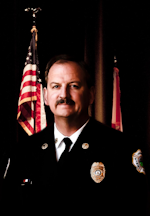I often compare changing between a super rural environment and an urban intercity agency by noting that it’s much different dodging a deer, elk or bobcat than people pushing shopping carts or aggressive drivers. Put another way, rural EMS spans a different depth and width than urban/suburban EMS.
Perhaps most front of mind is the elderly folks in rural communities. When our agency started vaccinating the 70-year-old-plus category for COVID-19, it was stunning how many people in that age group are in our rural Colorado setting. Furthermore, they aren’t concentrated in assisted-living centers or senior apartment complexes. This creates a lot of confounding factors, including the fact that they are traveling rural roads, which produces a much higher fatality rate in motor vehicle crashes.
Of course, you often see them in their home in response to lift-assist and wrongful activations of a medical-alert device. Undoubtedly, these are common calls in most EMS systems, but the rural setting’s lack of the wider roads, better lighting and shorter distances that are associated with the urban community means different transportation factors for the rural agency.
Travel time often is another complication of the rural EMS response. Sometimes, transport from a rural area to a regional hospital or medical center in the middle of the night presents added risk. Of course, there’s the concern of an animal strike or a drowsy or fatigued driver. Not to be overlooked is the bored partner who feels the need to text, surf the internet, etc. Problems can be caused when the partner/crew isn’t engaged in conversation with the driver to keep the driver awake and attentive. In-cab video often shows a disengaged partner, head buried in a phone, as a driver nods off or there’s a crash/impact to the ambulance. (This hammers home the importance of new vehicle technology that senses drowsiness and vibrates the seat or adjusts steering or that can see an animal before it is in the roadway.)
Few runs, delayed support
“Rust out” often is just as bad as burn out in the rural EMS environment, whether it be caused by not running enough calls for EMS providers to feel that they are making a difference or to effect skills degradation.
People who live rurally are very reluctant to call for help and often wait to the last minute, because is it a long time to process the event, compared with a drive of a few blocks to an ED or clinic in an urban or suburban community.
As a result, an urban or suburban medic might see 10 mildly/not seriously ill patients for every seriously sick patient. That ratio often is much smaller for a rural medic. Also, like that scene in “Backdraft” in which Kurt Russell asks, “So where’s the second-in companies, huh?” and gets a reply, “Sorry, man, John Wayne time. You’re on your own, boss,” rural EMS personnel often must improvise, enlist bystanders and work with people who have limited or no training who just are there to help. When next-due units are a long way away or you’re waiting for a second crew to come from home, decisions get made, which often put the crew to the test physically or mentally to multitask and, perhaps, maybe not deliver a perfectly packaged or assessed patient to the ED.
Last summer, an 11-patient motor vehicle crash got four members for the first 25 minutes. A patient who was developing a tension pneumothorax was pinned, and a hydraulic extrication was needed on a second vehicle. A third patient, who was in an odd position, showed pulseless but turned out to be just a position airway problem. The other eight victims who had to be managed included three children. Limited equipment, limited personnel and an abundance of road miles to the hospital: John Wayne time.
Relationships
EMS personnel who operate in a rural community often serve people who they know and care about personally. EMS personnel in a rural community get to have a conversation in transit with the person who they are assisting, because it’s a long transport and you are in a small box. As well, they aren’t pushed out of the ED nor must they rush to the next call without a chance to say goodbye or to ensure a good hand off to the nursing staff.
However, most of all when it comes to relationships, the rural community often knows the EMS personnel who serve them, who will answer the night call, who will put them back in bed. Odds are, they are grateful, but EMS personnel can’t expect for a member of the community to directly express that gratitude. The emotions that are tied to the assistance that they received might be too strong. You can conclude the gratitude is there but can’t be disappointed that it isn’t shared. After all, you do the job because you want to help, not for the “Thank you.”

Bruce Evans | Fire Chief
Bruce Evans, CFOD, SEMSO, NRP, MPA, is the fire chief for the Upper Pine River Fire Protection District, which is located outside of Durango, CO. He retired as an assistant chief from the North Las Vegas Fire Department after serving 27 years in Southern Nevada’s Fire and EMS system. Evans has been a course developer for many of the National Fire Academy curriculums and serves as a technical writer. He is the recipient of the prestigious 2010 James O. Page EMS Achievement Award and was awarded the NAEMT Presidential Leadership Award in 2014. The Colorado Governor appointed Evans to the State Emergency Medical and Trauma Advisory Committee in 2014. He is NAEMT’s liaison to the National Academies of Medicine preparedness committee and coauthored texts on EMS management and crew resource management and wrote a text on EMS quality improvement.






